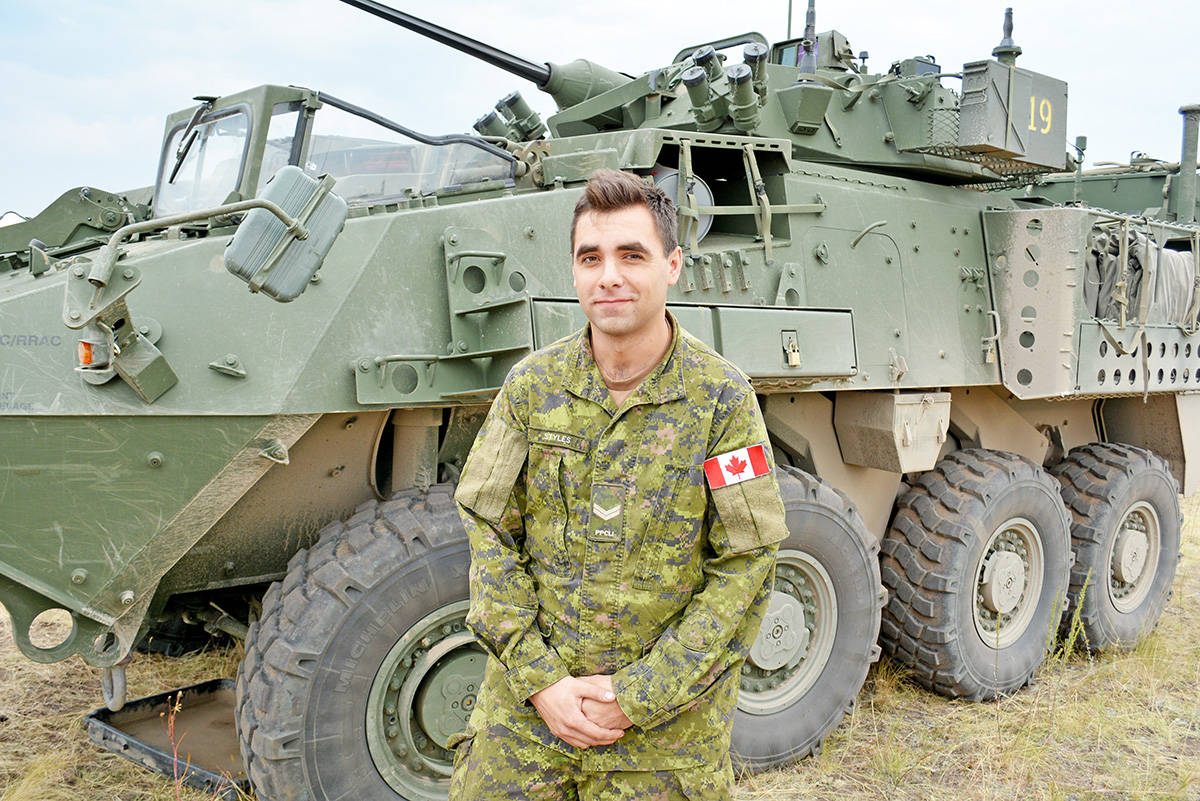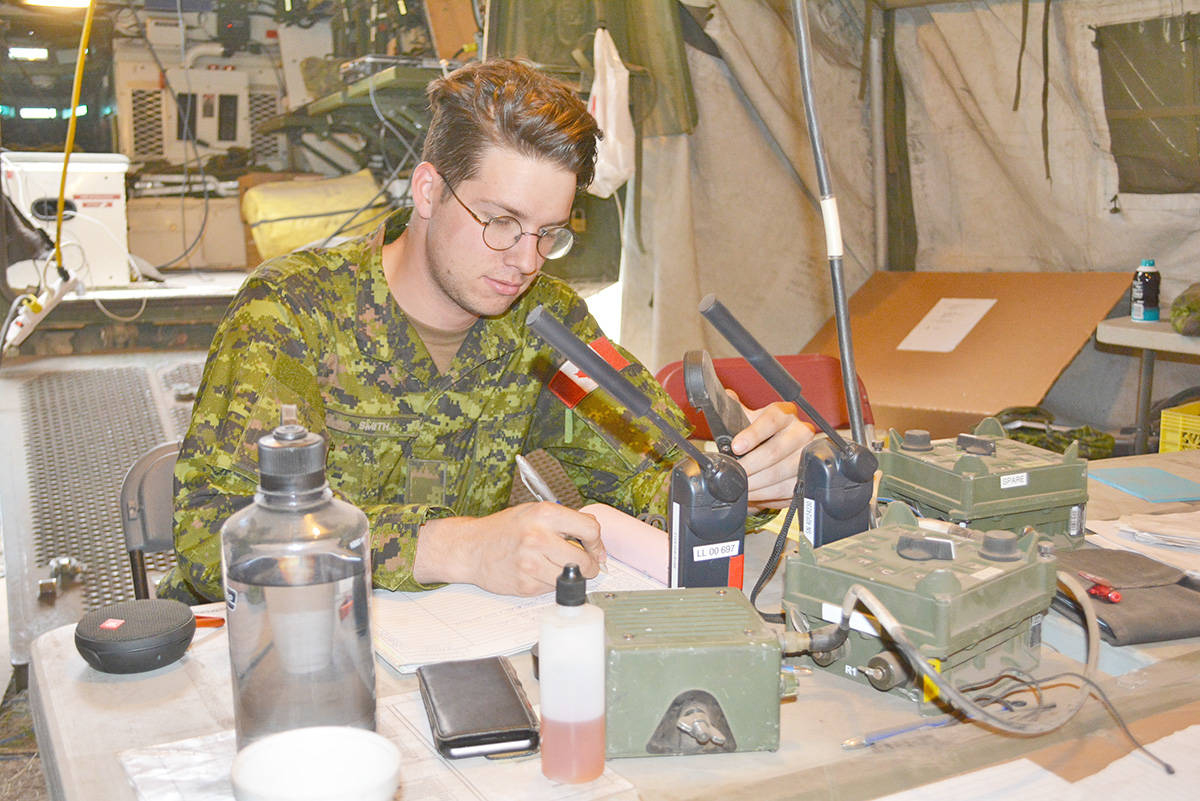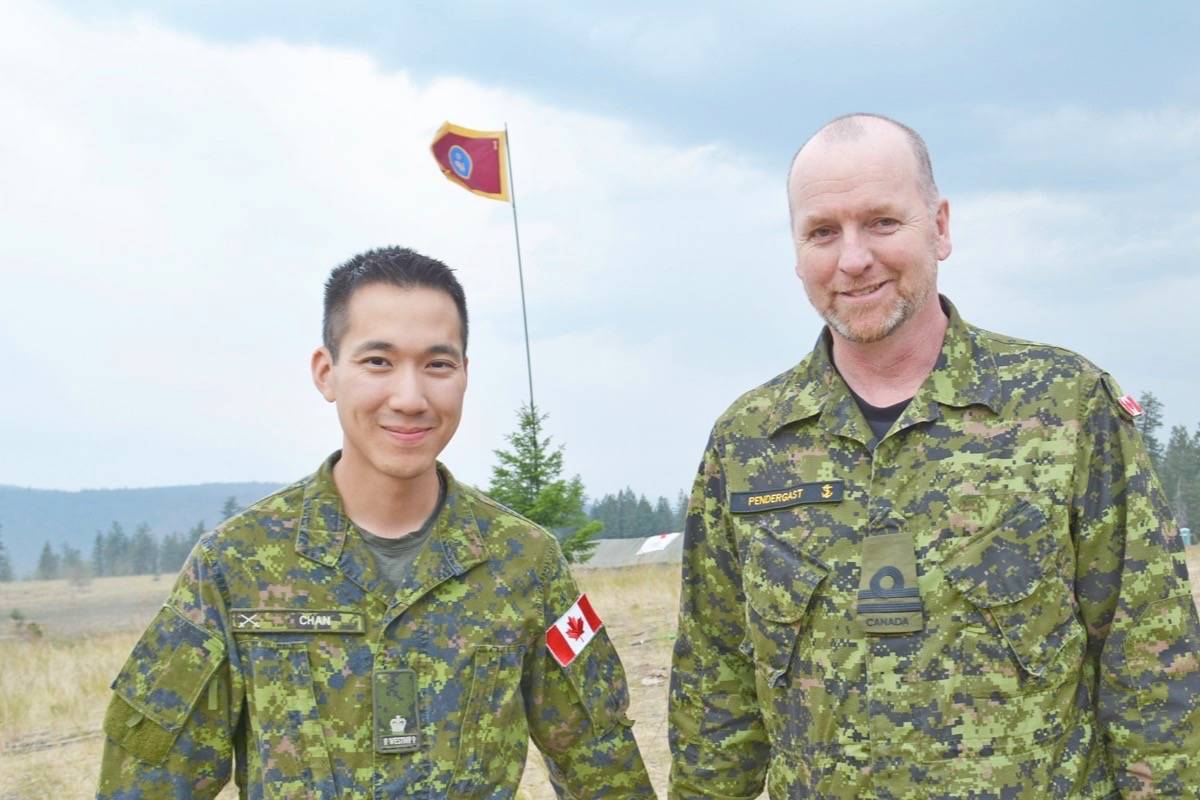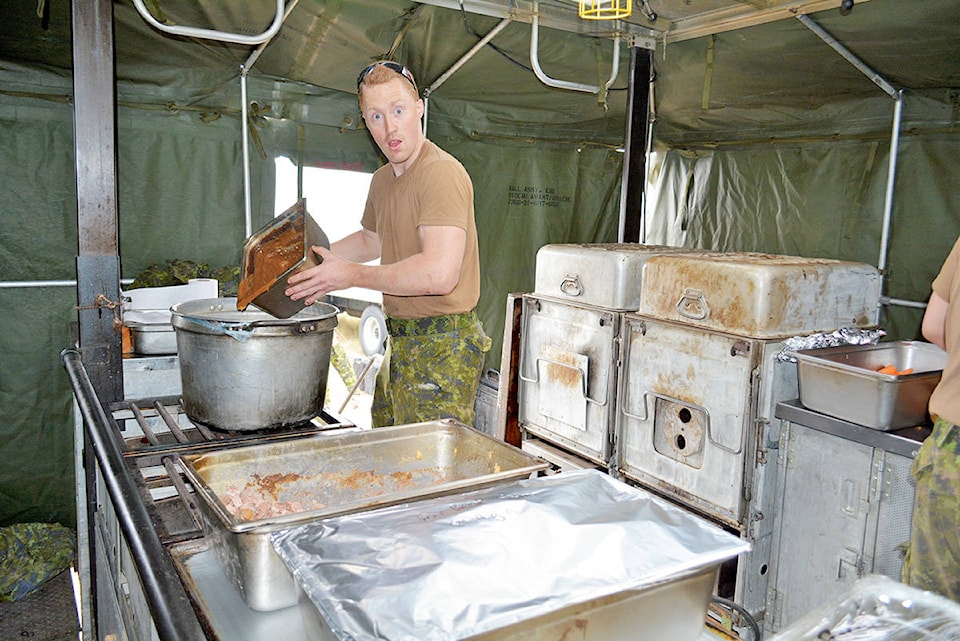Members of the Canadian Armed Forces have been assisting with wildfire mop-up efforts and patrols in the Cariboo-Chilcotin since Aug. 15.
During a recent tour of the camp at Riske Creek, 50 kilometres west of Williams Lake, Navy Lt. Paul Pendergast told the Tribune 200 soldiers from the 1st Battalion Princess Patricia’s Canadian Light Infantry (1PPCLI) based in Edmonton, from the 39 Canadian Brigade Group with reservists from all over B.C. and support personnel are stationed at the camp.
“Extra people makes the job easier,” Pendergast said.
Reservist Major Greg Chan of the 39 Canadian Brigade group is an officer in charge of Domestic Response Company at the camp.
He said the military personnel are doing type-three firefighting duties.
“We are going through either guard locations or around the fire conducting patrolling and mop-up,” Chan said. “We are supporting the BC Wildfire Service in their efforts so it can free up more of their advanced type one and type two firefighters to actually fight the main fires.”
Chan said initially the Armed Forces worked just south of Farwell Canyon with mop-up efforts on the Hanceville Complex fire and on Friday were moved to help closer to Gang Ranch.
“We’ve also been out at Fletcher Lake,” Chan said. “Our efforts have mostly been on the south end, but A-Company has pushed out to the west today as well as toward Hanceville. We are along Highway 20.”
The soldiers’ shifts mirror the BC Wildfire crews who are doing 12-hour rotations.
“Right now we have four platoons during the day and one during the night,” Chan said, noting the platoon sizes range from 25 to 35 people. “You could say on average 30 personnel make up a platoon.”
Each platoon is attached to one BC Wildfire strike leader, and under the leader’s directions they will do what is required.
“It’s worked out well,” Chan said. “The guys are really motivated and want to get into some action putting out fires. I think we surprised the BC Wildfire Service a bit with the amount of ground we can actually cover. I think the military training definitely pays off.”
Pendergast said when the military personnel find a hot spot smoking and get the direction to go after it, three or four guys will respond with axes, shovels and 20-litre water bladder backpacks they’ve brought with them.
The military’s main mode of transportation are the large military vehicles they have brought with them.
On Friday some soldiers drove one of the Armed Forces’ light infantry vehicles (LAV) to Tl’etinqox (Anaham) First Nation to meet with some of the children.
“The kids really enjoyed that,” said Cpl. Nathan Styles with 1PPCLI said.
Earlier that day, Styles was deployed to an area about 20 kilometres southwest of the camp to assist with the crews.
“We were mopping up where the fire had been and there were lots of hot spots,” he said.
Pendergast said the camp is totally self-sufficient with a command centre, portable communication equipment, mobile kitchen units, tables and chairs for dining, electric generators, showers and washroom units, a laundry unit, sleeping tents, even a workout tent where the weights are “very popular.”
“We’ve brought all the equipment we would need so we are not a burden to anyone,” he said.
Inside the communications tent, Chan said the military’s signallers are maintaining awareness of where everyone is located and what they are doing.
“It all gets plotted on a map which shows the fire’s location,” he said. “The pins on the map show the reservists right now are by Gang Ranch and the Brigade Forces platoon is by Alexis Creek.”
When the Canadian Armed Forces responds to natural disasters, the plan is called Operation LENTUS, Pendergast said.
“It could be for floods in Manitoba, an ice storm in Quebec, hurricane clean up in Nova Scotia or Newfoundland — we’ve done all of those things. It is something we train for to provide disaster relief in Canada. This is our fourth operation in 2017.”
Last week, the CAF camp stationed at the Cariboo Memorial Complex was moved to the site of the former Glendale elementary school. It includes the land task force Pacific Command Post, a mobile kitchen and all of the personnel required to run the continued operation.
There are a total of 500 CAF personnel deployed on Operation LENTUS.



